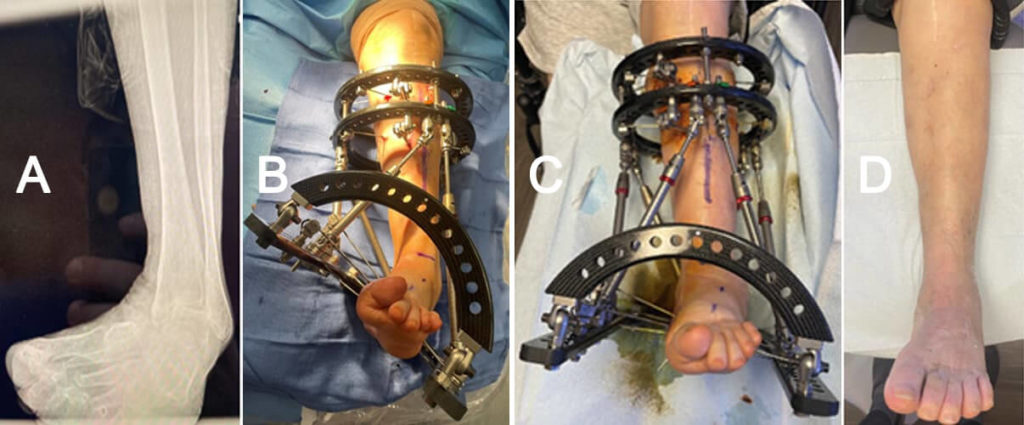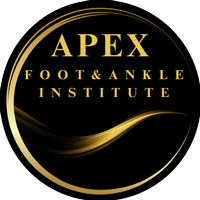Computer-Assisted Deformity Correction
Foot, Ankle, and lower limb Deformities
Foot and ankle deformities encompass a range of structural abnormalities that affect the lower extremities or foot and ankle. These conditions can be congenital or acquired and may cause significant life limitations in the form of pain, discomfort, and mobility issues.
Common congenital deformities include clubfoot, where the foot turns inward, and limb discrepancy where one limb or leg is shorter than the other causing pain or difficulty ambulating. Acquired deformities may result from injuries, arthritis, tendon imbalances, prior surgery, or other medical conditions.

Non-surgical approaches like physical therapy, orthotic devices, and proper footwear can help manage symptoms. In more severe cases, surgery may be necessary to correct the deformity and restore function.
It is essential to address foot and ankle deformities promptly to prevent further complications. Early intervention and a personalized treatment plan can greatly improve a person’s quality of life and their ability to stay active and mobile. If you or someone you know is experiencing foot and ankle deformities, consulting with a medical professional is crucial for proper evaluation and management.
LEARN MORE BELOW
Treatment options vary depending on the type and severity of the deformity.
Gradual Deformity Correction with external fixation for the lower extremities, foot or ankle is used by Dr. Sherick to reposition the abnormal position of bones back into normal alignment to improve or gain function.
This surgery is often performed on bones such as the Tibia, metatarsals or bones of the foot/ankle. The corrections are performed over several weeks or months depending on the degree of deformity and may involve staging of one or more surgical procedures to apply and remove an external fixator device in addition to performing other ancillary procedures such as osteotomy, fusion or soft-tissue tendon rebalancing.
When a deformity is longstanding or chronic, there is often an inability to reduce the deformity acutely without significant risk to the patient given contraction of important vital soft tissue structures and neurovascular structures. To minimize this risk surgeons may employ a protocol for a more gradual correction of the deformity that allows for the contracted at-risk soft tissue structures to be corrected more safely.
This is often needed as many severe or longstanding deformities have associated contraction or shortening of soft tissue structures such as arteries, nerves, veins, and tendons/ligaments. If immediate lengthening of soft tissues is performed vs gradual correction, then patients may suffer severe consequences to neurovascular structures (arteries, veins, nerves), and soft tissues/ligaments/tendons that have been contracted now requiring greater than a >1cm acute correction. When greater than 1cm of correction is performed it’s often recommended to perform gradually to mitigate risk to the patient.
When bone lengthening is desired for the patient then the surgical plan will include a Distraction Phase, during which the bones will gradually be separated and aligned, as well as a Consolidation Phase, wherein the new bone starts to harden and solidify and finally a healing phase, in which the bone becomes strong enough for the external fixator to be removed.
For the best outcome possible, these complex deformities and conditions of the foot, ankle and lower leg should be performed by a deformity specialist such as Dr. Sherick who specializes in computer-assisted gradual deformity correction with the use of external fixation. With advanced technology offered at Apex Foot and Ankle Institute, gradual deformity correction for the lower extremity is less invasive and more comfortable than ever before.
Computer-Assisted Foot & Ankle Deformity Correction
Computer-Assisted Foot & Ankle Deformity Correction is a cutting-edge advancement in orthopedic surgery that combines technology with surgical expertise to treat complex foot and ankle deformities. This innovative approach relies on computer-guided systems, allowing surgeons to plan, simulate, and execute highly precise corrections.
The process typically involves a preoperative CT scan to create a 3D model of the affected foot and ankle or lower limb. This model assists the surgeon in planning the correction, from the optimal surgical approach to implant selection. During the procedure, real-time feedback and navigation tools guide the surgeon, ensuring unparalleled accuracy in aligning bones and joints.
Benefits of this technology include reduced surgical time, smaller incisions, decreased risk of complications, and faster recovery for patients. Computer-assisted correction has revolutionized the treatment of conditions like complex fractures, arthritis, and congenital deformities.
Request An Appointment
Need Help With Your Foot And Ankle?


